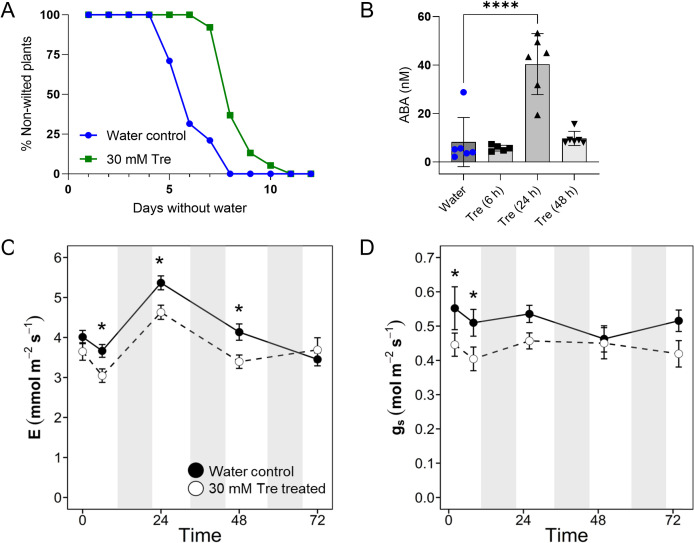Fig 3. Trehalose treatment delayed tomato wilting due to drought, likely by transiently increasing ABA content in xylem sap and by decreasing stomatal conductance and transpiration.
A) Curves show how long it took plants to wilt following a single treatment with either water (blue) or 30 mM trehalose (green) and then no water for two weeks (P = .01, T-test of areas under the curve). Data shown represent four biological replicates totaling 38 plants per treatment. B) ABA concentration in trehalose treated plants (one-way ANOVA Fisher’s LSD multiple comparisons to water-treated control: 6 h tre P = .63; 24 h tre P < .0001; 48 h tre P = .76). Water controls were collected concurrently with the treated samples and averaged. Data shown represent xylem sap samples from six plants. C) Transpiration and D) stomatal conductance were measured with LI-COR. Asterisks indicate P>.05, mixed-model ANOVA, Tukey’s HSD. Data shown represent 20 plants/treatment. Measurements were taken 10 min after treatment with trehalose or water, then each day after that in the morning two hours after growth chamber lights went on. Shaded gray vertical bars on the graphs represent night periods. Bars on the data points represent the standard deviation. All data were calculated from the same LICOR time points.

